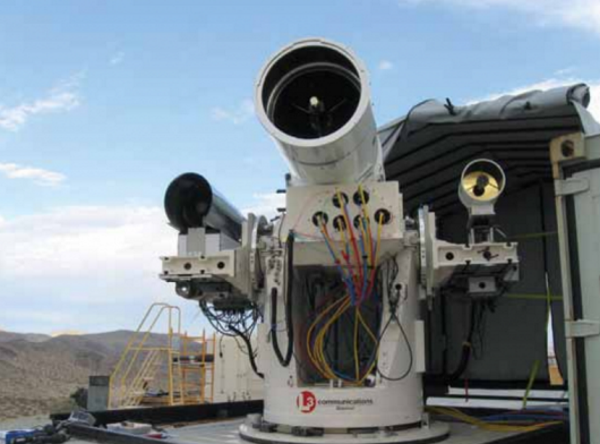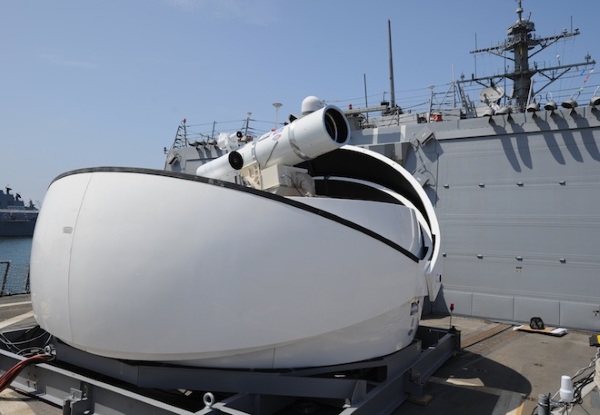Last year, we reported that the US Navy would be deploying its new solid-state laser weaponry aboard ships at some point in 2014.

At the time, it was difficult for leaders within the Pentagon to determine when, exactly, they’d be able to implement the technology. Finally, after months of waiting, the Navy’s laser weapon system, referred to as LaWS, was tested out in the Persian Gulf, where it hit and destroyed targets mounted atop a small boat, blew a 6-foot drone out of the air, and annihilated other moving targets.
The cost per shot? Just $0.59.
“This is the first time in recorded history that a directed energy weapons system has ever deployed on anything,” Rear Admiral Matthew Klunder, chief of naval research, told reporters at the Pentagon. “A lot of people talk about it — we decided to go do it.”
All told, the Navy spent about $40 million over the last seven years to develop the technology. Located aboard the USS Ponce, a one-time active ship that was converted to a floating stage, LaWS consists of six commercial welding lasers tied together and aimed at the same point. A chief petty officer sits inside the ship’s combat information center and directs the solid-state laser with a video game-esque controller. LaWS generates about 30 kilowatts of power, or about 40 horsepower of force, and tests have shown its shot to be effective up to about a mile away.

Worth noting is the fact that the weapon’s power is adjustable, ranging from distract to disable to destroy.
“Light from a laser beam can reach a target almost instantly,” a July congressional report said. “After disabling one target, a laser can be redirected in several seconds to another target. Fast engagement times can be particularly important in situations, such as near-shore operations, where missiles, rockets, artillery shells, and mortars could be fired at Navy ships from relatively close distances.”
In terms of limitations, LaWS can be disabled by bad weather; also, it’s limited to line-of-sight confrontations. The Navy hopes that notes taken from its recent demonstration can be used to improve the next generation of laser weaponry, which is estimated to equip future fleets in the early 2020s.
For now, the current roster of LaWS will serve to complement a warship’s traditional long-range guns and missiles. To see its effectiveness, watch the laser in action via the video below:
Via Time
Advertisement
Learn more about Electronic Products Magazine





